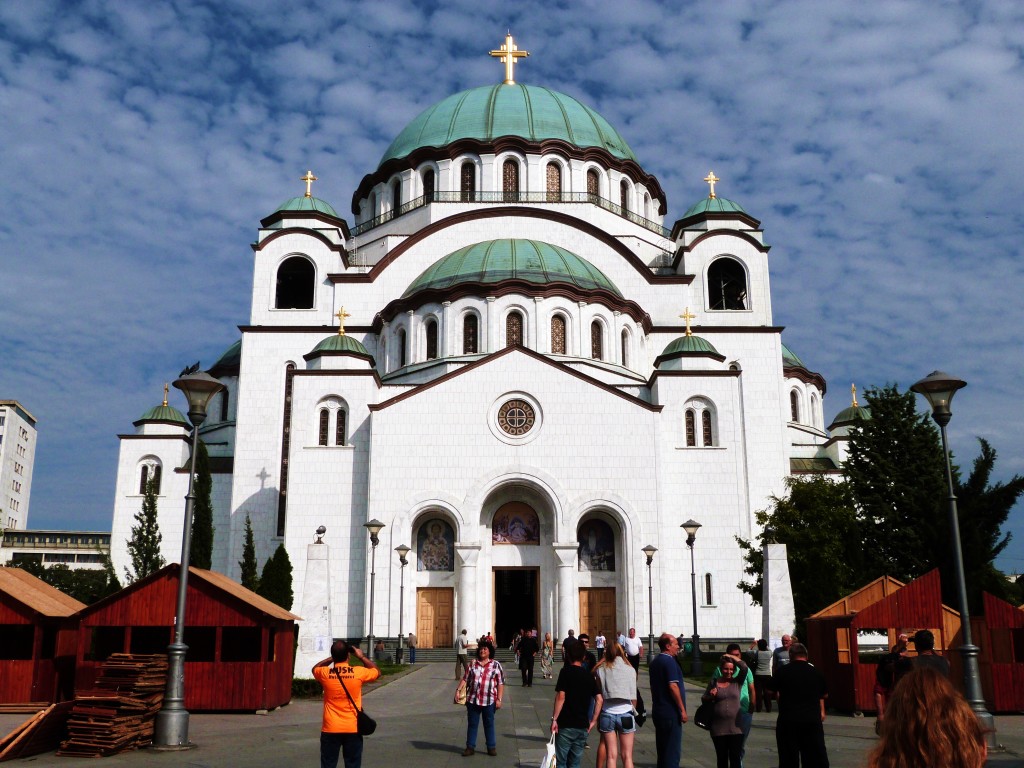Belgrade is an interesting, pretty and thriving city. But you might have to look beyond its sights to find it.
Reading articles and blog posts about Belgrade, it’s obvious there’s a bit of a buzz about the place. Often called the ‘new Berlin’, the city is praised for being an alternative emerging European destination with an energetic nightlife.
We had one full day in Belgrade and we spent it in the wrong places.
Let me explain…
Belgrade felt a lot more like the ‘unknown’ than our other destinations in Bosnia or Croatia – Google searches didn’t really give a clear idea of what the city looked like or what to expect. So we headed to some of the city’s sights to get a feel for the place…
Where we went
We headed out to Kalemegdan Fortress, a short walk from our hostel. I won’t lie, it wasn’t great.
In fairness, it turns out we accidentally entered through the back, meaning there was no chance of an awe-inspiring first glimpse. While the view of the Sava and Danube converging was nice, there was very little to actually see – and even less accessible information to work out what you were seeing. The complex was vast and the fortress must have been huge in its heyday, but these days, it was a bit disappointing.
Next up was the Yugoslav History Museum. The National Museum would’ve been top of my list, but this was still closed.
The Museum of Yugoslav History has one main draw – Tito’s final resting place in the winter garden, which was built for him and his wife. Inside, there is a fairly good exhibit which goes a long way to explaining the international fondness for him and his influence on Yugoslav people. The other sections are a little bit more surreal… including art Tito himself owned and an ethnological museum that promises a ‘tour around the World’…
Then, we head to the Church of Saint Sava, the city’s only real landmark. It might be the largest Orthodox church in the world, but it’s definitely a bit of a fixer-upper…
Where we should’ve gone
Our hostel was located in the very nice neighbourhood of Dorćol (‘hip and leafy’ according to one guide book in particular). Originally the centre of the city’s Jewish community, the area used to be an international hub. We had a beautiful meal here the evening we first arrived, but we should have spent more time here the next day exploring its cafes.
Skadarska is known as Belgrade’s bohemian hub. The vintage street is known for its many cafes and bookshops and is often called the Serbian Montmartre. After traversing the city visiting the museum and the church, we unfortunately didn’t have any time to explore this corner of the city.
Something I wish we’d done more of in Belgrade was general wondering in the city centre. The city has a really unique look, with beautiful buildings standing next to ruins: a legacy of the 1999 NATO bombings, from which the city is still recovering. I don’t have many photos which capture everyday scenes in Belgrade, which is a real shame.
Final thoughts
Despite an essence of disappointment about our time in the city, I really did like Belgrade. It was so refreshing to be back in Eastern Europe and the close relationship Serbia has with Russia was visibly everywhere – something I found really exciting.
We also had a great night out on one of the floating clubs on the Sava river – something that I would definitely recommend.
Belgrade is every bit the up-and-coming destination it’s made out to be, but it’s not exactly the city I was expecting: forget the sights and landmarks and just explore on foot. You’ll be glad you did.
I visited Belgrade in September 2014, flying Dortmund – Belgrade with WizzAir. The budget airline also flies from Luton.

